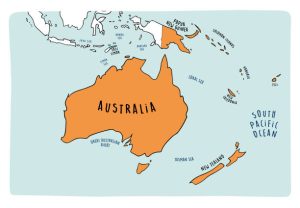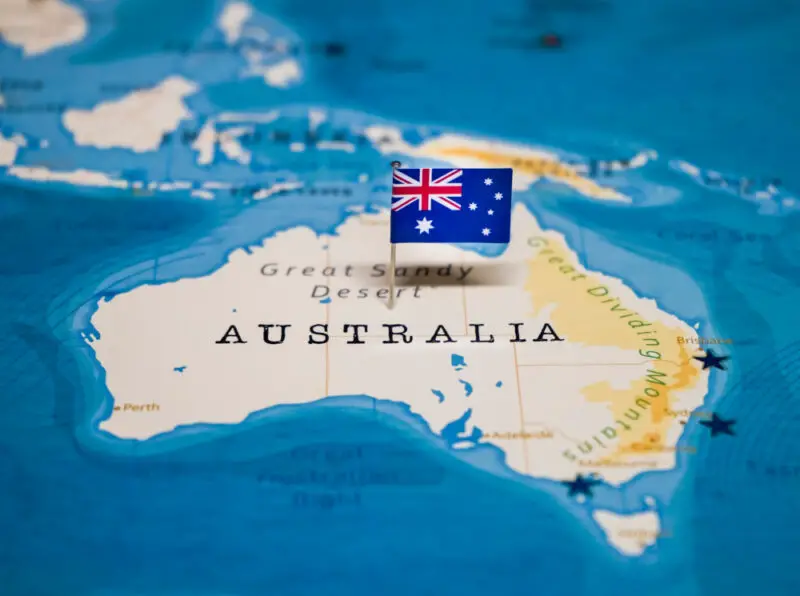“Is Australia giving PR now? Australia’s immigration policies are important for individuals seeking to establish their lives in the Land Down Under. Understanding these policies is crucial, as they pave the way to obtaining the highly sought-after status of Permanent Residency (PR) in Australia. In this comprehensive guide, we delve into the intricacies of Australia’s immigration system, focusing on the PR pathway and its significance for aspiring migrants.
Permanent Residency is a coveted status that offers numerous benefits to successful applicants. It grants them the right to live, work, and study in Australia indefinitely, along with access to various social benefits and healthcare services. Moreover, PR serves as a stepping stone to Australian citizenship, providing security and stability to individuals and their families.
Throughout this article, we will explore the current state of Australia’s PR policies, including eligibility criteria, application processes, and the impact of external factors such as the COVID-19 pandemic. We will also shed light on the points-based system, regional visa options, and expert tips to improve your chances of a successful PR application.
Contents
Understanding Australia’s Immigration System
Australia’s immigration system is a well-structured framework designed to regulate the entry and stay of foreign nationals in the country. It offers various visa categories tailored to accommodate various purposes, from short-term visits to long-term residences and everything in between. At the heart of this system lies the coveted status of Permanent Residency (PR), which holds immense significance for individuals aspiring to build their lives in Australia.
The Australian immigration system operates on a tiered approach, catering to different visa needs and objectives. There are several visa categories, each serving a specific purpose:
1. Temporary Visas: These visas allow individuals to visit or reside in Australia for a limited period. They include tourist visas, student visas, and work visas. Temporary visas provide opportunities for short-term stays, study abroad experiences, and skilled professionals seeking work opportunities in Australia.
2. Family Visas: This category is designed for Australian citizens and PR holders who wish to sponsor their family members for migration. It facilitates the reunion of families, allowing eligible relatives to live together in Australia.
3. Skilled Migration: Australia’s Skilled Migration Program aims to attract highly skilled individuals to contribute to the country’s economy. Skilled visas are points-based and require applicants to meet specific eligibility criteria for age, English proficiency, work experience, education, and occupation.
4. Business and Investment Visas: For entrepreneurs, investors, and business owners seeking to establish or invest in Australian businesses, this category offers various visas tailored to meet their needs.
5. Humanitarian Visas: This category provides refuge and protection to individuals facing persecution, conflict, or danger in their home countries.
At the pinnacle of the immigration hierarchy is Permanent Residency (PR). Obtaining PR status in Australia is a significant milestone for migrants, as it offers a pathway to long-term settlement. PR holders can live, work, and study in Australia indefinitely. They also gain access to social benefits and healthcare services, making it an attractive option for those seeking stability and security in their new home.
Moreover, PR is a stepping stone to Australian citizenship. After meeting certain residency requirements, PR holders can apply for citizenship, which provides the opportunity to fully participate in Australian society and access additional privileges, such as the right to vote and hold public office.
Historical Perspective on PR in Australia
Australia’s approach to Permanent Residency (PR) has evolved significantly over the years, reflecting the country’s changing needs, societal values, and economic priorities. Understanding the historical context of PR policies provides valuable insights into Australia’s immigration landscape.
1. Brief History of PR Policies in Australia:
Australia has a long history of immigration, with diverse waves of migrants shaping the nation’s cultural fabric. PR as a formalized status emerged in the post-World War II era when the Australian government sought to bolster its population and workforce. The first structured PR program was introduced in the late 1940s to encourage European migration, leading to significant population growth and nation-building.
2. Key Changes and Updates in the Past Decade:
In recent decades, Australia’s PR policies have experienced notable changes in response to internal and external factors. The past decade witnessed several updates to the immigration system, with an increased emphasis on the points-based system for skilled migration. This system allowed Australia to attract highly skilled individuals who could contribute to the country’s growing economy.
The skilled migration program underwent periodic adjustments to meet evolving labor market needs. Occupations were added or removed from the eligible skilled occupation lists based on demand and supply factors. Additionally, changes in visa application processes and requirements aimed to streamline the immigration system and ensure the efficient processing of applications.
3. Impact of External Factors on Immigration Policies:
External factors have had a profound influence on Australia’s immigration policies. Global events, economic conditions, and demographic shifts have all shaped the country’s approach to PR. For instance, during periods of economic growth, Australia’s PR policies may be more flexible and open to skilled workers who can contribute to specific industries facing labor shortages.
Conversely, economic downturns or geopolitical events may prompt the government to tighten immigration policies to protect domestic job opportunities and resources. The outbreak of the COVID-19 pandemic, for example, led to temporary travel restrictions, changes in processing times, and adjustments to PR pathways as part of Australia’s response to the health crisis and its economic impact.
Current Status of PR in Australia
A dynamic blend of economic priorities, social considerations, and global circumstances shapes the current immigration landscape in Australia. The country continues to offer various pathways for individuals seeking Permanent Residency (PR), attracting skilled workers, families, and aspiring citizens alike.
1. Overview of the Current Immigration Landscape:
Australia’s immigration system remains one of the most sought-after in the world, known for its well-structured visa categories and opportunities for long-term settlement. The country’s economic growth and diverse industries demand skilled professionals, making skilled migration a prominent avenue for PR aspirants. Additionally, family-sponsored visas enable Australian citizens and PR holders to reunite with their loved ones.
2. Updates on PR Grant Trends:
In recent times, Australia has seen fluctuations in PR grant trends due to various factors, including changing economic conditions and shifting policy priorities. Government policies often adapt to cater to emerging labor market needs, leading to updated skilled occupation lists and adjustments in the points-based system.
The PR grant trends also respond to demographic patterns and the overall demand for migration. The number of PR grants may vary yearly depending on the economic climate and other external factors. Consequently, aspiring migrants need to stay informed about the latest updates and requirements to optimize their chances of success.
3. Factors Influencing PR Eligibility and Approval:
Several factors influence an individual’s eligibility for PR in Australia. For skilled migration, the points-based system evaluates criteria such as age, English language proficiency, work experience, educational qualifications, and nominated occupation. Meeting the minimum points threshold is essential for consideration.
Family-sponsored PR depends on the relationship with an eligible sponsor and adherence to specific visa requirements. Applicants need to demonstrate genuine relationships and meet relevant health and character criteria.
Other factors that may impact PR eligibility include changes in visa application processes, occupation ceilings, and state or regional sponsorship availability. External events like the global pandemic may also influence visa processing times and policies.
Eligibility Criteria for Australian PR
Obtaining a Permanent Residency (PR) in Australia is a significant milestone for individuals looking to establish long-term roots there. The eligibility criteria for Australian PR encompass a range of factors, including skilled migration pathways, family-sponsored PR, and other special categories.
1. Detailed Explanation of Common Eligibility Requirements:
a. Age: Applicants must be under the specified age limit, typically 18 to 45 years, to be eligible for certain skilled migration visas.
b. English Language Proficiency: Demonstrating English language competency is essential for most PR pathways. This can be fulfilled through standardized language tests like IELTS or equivalent scores.
c. Skilled Occupation: Aspiring migrants must nominate an occupation from Australia’s skilled occupation list that matches their skills and qualifications.
d. Skills Assessment: A positive skills assessment from a relevant authority is usually required to verify the applicant’s qualifications and work experience in their nominated occupation.
e. Work Experience: The number of years of work experience in the nominated occupation is a critical factor in the points-based system for skilled migration.
f. Education: Applicants may gain additional points for higher education qualifications related to their nominated occupation.
g. Health and Character: Meeting health and character requirements is mandatory for all PR applicants, ensuring they pose no threat to public health or security.
2. Skilled Migration Pathways for Professionals and Workers:
a. General Skilled Migration (GSM): This pathway includes visas such as Subclass 189 (Skilled Independent) and Subclass 190 (Skilled Nominated). GSM is points-tested and does not require employer sponsorship.
b. Employer-Sponsored Visas: An Australian employer may sponsor skilled professionals through visas like Subclass 186 (Employer Nomination Scheme) or Subclass 482 (Temporary Skill Shortage). These pathways often lead to PR after meeting certain requirements.
c. State/Territory Nominated Visas: Many Australian states and territories have skilled migration programs, allowing nominated applicants to gain PR through Subclass 491 (Skilled Work Regional – Provisional) and Subclass 190 (Skilled Nominated) visas.
3. Family-Sponsored PR and Other Categories:
a. Partner Visas: Australian citizens and PR holders can sponsor their eligible partners for PR through the Subclass 820/801 (Partner Temporary/Permanent) or Subclass 309/100 (Partner Provisional/Permanent) visas.
b. Parent Visas: Parents of Australian citizens or PR holders may be eligible for PR through the Subclass 103 (Parent) visa, subject to certain financial and balance-of-family requirements.
c. Humanitarian and Refugee Visas: Individuals seeking refuge or protection in Australia may be granted PR through the Humanitarian Program, which includes visas like Subclass 204 (Refugee) and Subclass 866 (Protection).
Application Process for PR in Australia
Applying for Permanent Residency (PR) in Australia is a significant undertaking that requires careful preparation and adherence to specific procedures. Below is a step-by-step guide to the application process, along with essential documents, processing times, and potential challenges.
Step 1: Eligibility Assessment
– Determine the most suitable PR pathway based on your skills, qualifications, and circumstances.
– Check your eligibility against the specific requirements of the chosen visa category.
Step 2: Obtain Skill Assessment (For Skilled Migration)
– Obtain a positive skill assessment from the relevant Australian assessing authority for your nominated occupation if applying under skilled migration.
Step 3: sending a letter of interest (EOI)
– Create and submit an EOI through SkillSelect, Australia’s online platform for skilled migration applicants.
– Provide information about your skills, work experience, education, and other relevant factors to receive an invitation to apply for PR.
Step 4: Obtain a Request for Application (ITA)
– If your EOI is successful and you receive an ITA, you can proceed with the PR application.
Step 5: Prepare and Submit the PR Application
– Gather all required documents and evidence, including identity documents, English language test results, skills assessment, educational qualifications, and work experience records.
– Complete the application form accurately and pay the relevant visa application fee.
Step 6: Health and Character Checks

– Undergo medical examinations to meet health requirements. Appointments must be conducted with authorized panel physicians.
Step 7: Wait for the Application Outcome
– After applying, await a decision from the Department of Home Affairs. Processing times can vary depending on the visa type, application volume, and other factors.
Step 8: Respond to Requests for Additional Information
– The department may request further information or clarification during the assessment process. Promptly provide any additional documents required.
Step 9: Visa Grant or Refusal
– If successful, you will receive a PR visa grant.
– In case of refusal, you may have options for review or appeal, depending on the visa subclass and circumstances.
Potential Challenges:
– Meeting the strict eligibility criteria, especially for points-based visas, can be challenging.
– Accurate and thorough documentation is essential to avoid delays or refusals.
– Changes in immigration policies or processing times may impact the application process.
Points-Based System for PR in Australia
Australia operates a points-based immigration system for certain visa categories, including many skilled migration pathways. This system aims to select individuals with the skills and attributes needed to contribute to the country’s economy and society. Here is an overview of Australia’s points-based system, the factors considered for point allocation, and strategies to maximize points and improve PR chances.
1. Overview of Australia’s Points-Based Immigration System:
Under the points-based system, applicants are awarded points based on various factors such as age, English language proficiency, work experience, education, and other relevant criteria. The total points scored determine an applicant’s eligibility and ranking in the Expression of Interest (EOI) pool. Applicants with higher points have a better chance of receiving an Invitation to Apply (ITA) for Permanent Residency.
2. Factors Considered for Point Allocation:
a. Age: Younger applicants receive higher points, as Australia seeks to attract individuals with longer potential working lives.
b. English Language Proficiency: Proficiency in English is a key factor, and higher language test scores result in more points.
c. Skilled Employment Experience: Work experience in the nominated occupation is rewarded, with additional points for more years of experience.
d. Educational Qualifications: Points are awarded based on educational attainment, ranging from diploma to doctoral degrees.
e. Nominated Occupation: The relevance of the nominated occupation to Australia’s skilled occupation list determines point allocation.
f. State or Territory Nomination: Nomination by a state or territory government can provide additional points for certain visas.
g. Partner Skills: Additional points may be awarded if the applicant’s partner meets specific skills and language requirements.
h. Professional Year or Study in Australia: Completing a Professional Year program or studying in regional Australia can earn extra points.
3. Strategies to Maximize Points and Improve PR Chances:
a. Improve English Language Proficiency: Investing time in language training and achieving higher language test scores can significantly boost points.
b. Gain Relevant Work Experience: Obtaining more years of skilled work experience, especially in the nominated occupation, can enhance points.
c. Pursue Higher Education: Completing higher qualifications can result in additional points. Consider upskilling or pursuing higher degrees if possible.
d. Consider State or Regional Nomination: Explore opportunities for state or territory nomination, which can add valuable points to the application.
e. Partner Skills: If applicable, ensure your partner meets the necessary skill and language requirements to claim partner points.
f. Seek Professional Advice: Engage with experienced migration agents or consultants who can guide you through the process and optimize your points.
State Nominated and Regional Visas
State or regional nomination for Permanent Residency (PR) in Australia plays a pivotal role in the immigration landscape, offering unique benefits and opportunities for skilled migrants. These visas address the country’s regional development needs while providing a pathway to PR for eligible applicants.
1. Importance of State or Regional Nomination for PR:
State or regional nomination is a valuable endorsement from an Australian state or territory government expressing their interest in having skilled migrants settle in their region. This nomination carries additional points in the points-based system, significantly improving an applicant’s chances of receiving an Invitation to Apply (ITA) for PR.
2. Benefits and Opportunities in Regional Areas:
a. Priority Processing: State-nominated visa applications often receive priority processing, leading to faster outcomes for applicants.
b. Additional Points: The nomination provides additional points in the points-based system, which can be crucial in securing an ITA for PR.
c. Opportunity for Permanent Residency: Many state or regional visas provide PR pathways, allowing migrants to settle permanently in Australia.
d. Regional Development: Migrants settling in regional areas contribute to local economies, address skill shortages, and support regional growth.
3. Overview of Various State-Sponsored Visa Options:
a. Subclass 491 (Skilled Work Regional – Provisional) Visa: This visa requires state or territory nomination and allows skilled workers and their families to live and work in a designated regional area for up to five years. After meeting specific requirements, holders can apply for PR through the Subclass 191 (Permanent Residence (Skilled Regional)) visa.
b. Subclass 190 (Skilled Nominated) Visa: This visa also requires state or territory nomination and allows skilled workers to live and work anywhere in Australia. Nominees must commit to living in the nominating state or territory for a specific period after obtaining PR.
c. Subclass 489 (Skilled Regional – Provisional) Visa (Closed to New Applications): The Subclass 489 visa was replaced by the Subclass 491 visa in November 2019. However, individuals who previously held this visa can still access certain pathways to PR.
d. Other State-Specific Visas: Some states or territories have unique visas catering to their needs and priorities. These may include visas for business owners, entrepreneurs, or individuals with specialized skills in demand.
Expert Tips for a Successful PR Application
Applying for Permanent Residency (PR) in Australia is a significant endeavor that requires careful planning and attention to detail. To enhance your chances of a successful PR application, consider the following expert tips from immigration professionals and consultants:
1. Seek Professional Advice:
Engaging with experienced immigration experts and consultants can be invaluable in navigating the complex application process. They can provide personalized guidance, assess your eligibility, and help you choose the most suitable PR pathway based on your qualifications and circumstances.
2. Understand the Eligibility Criteria:
Thoroughly familiarize yourself with the eligibility criteria for the visa subclass you are applying for. Ensure you meet all the requirements, including age, English language proficiency, skills assessment, work experience, and health and character checks.
3. Gather Comprehensive Documentation:
Missing or incomplete documents can lead to delays or refusals. Remember that each visa category may have specific document requirements, so pay attention to the details.
4. Avoid Common Mistakes:
Be aware of common mistakes applicants often make during the application process. These may include submitting outdated or incorrect forms, providing insufficient evidence of work experience or qualifications, or not meeting health and character requirements.
5. Plan Ahead:
Applying for PR in Australia can be a time-consuming process. Plan well in advance and be mindful of visa processing times, which vary based on the visa type and current demand. Submitting your application early can help you avoid last-minute stress.
6. Maximize Your Points:
If you are applying under a points-based visa category, strategize to maximize your points. Enhance your language proficiency, gain relevant work experience, and explore opportunities for state or regional nomination to increase your chances of receiving an Invitation to Apply.

7. Present a Strong Case:
Craft a compelling and well-structured application highlighting your qualifications, skills, and contributions to Australia’s economy and society. A strong case will strengthen your chances of obtaining PR.
8. Follow Instructions Carefully:
Please follow the instructions the Department of Home Affairs provided meticulously. Failure to comply with instructions can lead to application delays or refusals.
9. Be Patient and Persistent:
The immigration process can be lengthy and may require patience. Be prepared to wait for visa processing and continue pursuing your PR goals.
Is Australia giving PR now?
In conclusion, Australia’s immigration system offers diverse opportunities for individuals seeking Permanent Residency (PR). Stay informed, seek professional advice, and persevere throughout the application process. By understanding the current PR policies, being well-prepared, and staying committed, you can realize your dream of becoming a permanent resident in Australia. Embrace the journey and look forward to a prosperous future in this welcoming nation.





